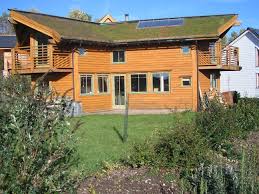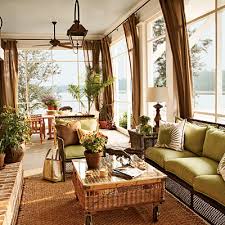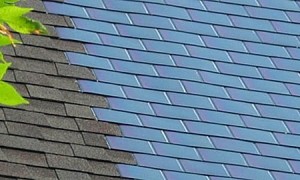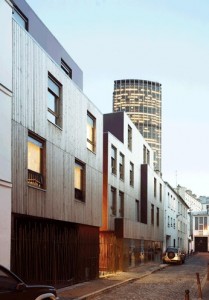Posted: April 28th, 2014 | Author: jimmurray | Filed under: Home Decoration, Sustainable Architecture | Tags: Eco Friendly, Home decor, low carbon footprint | No Comments »
This post is another in our guest blogger series. This one is from Leon White. Hope you find it as interesting and informative as I did.
 It is a common desire to create a living space which is comfortable and chic. However home furnishings can leave large carbon footprint which is very harmful for the environment. Read on to find out how you can opt for innovative home décor ideas without compromising style. You can choose to decorate your home in an eco-friendly way. You must select non-toxic paints and right fabric. These days while decorating homes families are opting for environment-friendly choices. Going green is more than a fad now. You can decorate your home using less energy, fewer non-renewable resources and lesser water.
It is a common desire to create a living space which is comfortable and chic. However home furnishings can leave large carbon footprint which is very harmful for the environment. Read on to find out how you can opt for innovative home décor ideas without compromising style. You can choose to decorate your home in an eco-friendly way. You must select non-toxic paints and right fabric. These days while decorating homes families are opting for environment-friendly choices. Going green is more than a fad now. You can decorate your home using less energy, fewer non-renewable resources and lesser water.
Need for environment-friendly choices
With threats of global warming individuals are becoming more aware about climate change and environment. Most home owners want to behave as responsible citizens by making use of eco-friendly home décor items. These décor items can be recycled and renewed to give a new and interesting look to your home. Redecorate your home on a green theme. As you decide the décor be kind to the environment. The best way to go green is to incorporate reused items in home décor. It is essential that you opt for eco-friendly home décor ideas as it can save energy and cause less harm to the environment.
 Popular eco-friendly flooring
Popular eco-friendly flooring
You can live in an environmental friendly atmosphere by selecting the right flooring, furnishing and lighting. You can replace artificial flooring with natural products like bamboo or linoleum. Bamboo is durable and adds a touch of elegance to the flooring. It comes in different colors and patterns. Bamboo is easy to maintain and can be installed easily. Cork, the bark of an oak tree, is another biodegradable product which can be used for flooring. Cork can be used in variety of paints to suit the color scheme of your room. Glass is a popular eco-friendly material which does not mildew or mold in damp environments.
Opt for “green” paints
Eco-friendly paint can improve the quality of air inside your home. When you decide to change the color palette of your home you can opt for zero VOC paint or low VOC paint. VOC or volatile organic compounds are found in different products. VOC’s from paints have a negative quality on the environment. It is important to remember that lighter the paint lesser is the VOC that it will contain. You can opt among milk paints, clay paints or lime wash. Milk paints are biodegradable and organic.
 Right furniture for a new look
Right furniture for a new look
When you buy eco-friendly furniture ascertain the materials which are used to create the furniture. Make sure that recyclable and sustainable sources are used to create the pieces of furniture. Adhesive used in the furniture should not contain VOC. You can select furniture which is used by bamboo. You cans hop in vintage or antique shops. Before you buy new items you can reuse the existing furniture. Use innovation and creativity to decorate your home and add a fresh look. Bamboo is considered as one of the most eco-friendly choices. Opt for furniture which is made of recycled material.
Adopt a green lifestyle
Whilst shopping for home décor accessories be on the lookout for products which are made from organic fiber. Proper lighting can create a magical effect in your home. You can make use of energy saving bulbs to add a brighter look to your home. You can consider buying furnishings which have been manufactured with renewable materials. If you are a responsible person who is trying to lead a green lifestyle these ideas on home décor will be useful.
Author Bio: Leon White has decorated his home with eco-friendly wallpapers. He wants to adopt a green lifestyle. To keep the well-furnished home secure Leon has opted for ADT-Pulse. It is a trustworthy service which offers strong protection to homeowners.
Posted: February 6th, 2014 | Author: jimmurray | Filed under: Green Businesses, Green Recycling, Solar Energy, Solar Roofing Shingles, Sustainable Architecture | Tags: Solar Roofing Shingles, Yale Environment 360 blog | No Comments »
 The wonderful thing about real innovation in green technology is how simple they are. This short article about the development of solar energy roof shingles is a great example of what I mean here. Normally creation of solar energy generating panels requires the uses of rare earth metals which are becoming, rarer as time goes by. So the need to create new energy saving ideas from materials that are cheaper and more abundant is the next big frontier.
The wonderful thing about real innovation in green technology is how simple they are. This short article about the development of solar energy roof shingles is a great example of what I mean here. Normally creation of solar energy generating panels requires the uses of rare earth metals which are becoming, rarer as time goes by. So the need to create new energy saving ideas from materials that are cheaper and more abundant is the next big frontier.
This article was posted on the Yale Environment 360 blog. We encourage you to check it out, and subscribe to this blog. This is a big green idea and those are always the best kind.
http://e360.yale.edu/digest/solar_shingles_made_from__common_metals_offer_cheaper_energy_option/3600/
Posted: December 31st, 2013 | Author: jimmurray | Filed under: Green Products, Sustainable Architecture, Trees & Parks | Tags: carpentry, construction, eco-friendly wood, joinery, materials, timber, Woodwork | No Comments »
This post comes to us courtesy of a British company called Inwood. This is a company that makes wooden entrance gates and garage doors and from the look of their site, they are very good at it. These people work with wood and make beautiful things from it. But they are also quite sensitive to the sustainable aspects of wood growing and harvesting. I found this article to be quite interesting, and I hope you do too.
Also, since this is the last post of the year, Terry, Simon and I would like to wish you all the best in 2014.
*******************

Timber is obviously one of the planet’s most vital resources, a useful building and crafting material that’s both practical and hard wearing. However it is vitally important to make a conscious effort to maintain forest-land due to its obvious importance in helping climate, biodiversity, and critical eco-systems.
When sourcing timber there are a few key areas to consider in determining whether it is eco friendly:
- Is the wood legally sourced from non-ancient or non-protected forests?
- Is the wood certified by the Forest Stewardship Council (FSC)?
- Is the wood certified by other organizations? (“SmartWood by Rainforest Alliance”, “Green Seal” etc)
- How durable is the wood?
- How long does it take to reach maturity? (the less time, the more easily-managed the source is)
The last two points are the key to what is known as the felling/replanting balance, it is vital for the source to be planted and grow to maturity at a faster rate than it is felled. This is the fundamental key to eco-friendly timber.
We make a sustained effort to meet all these criteria that goes hand-in-hand with the type of quality we’re looking to deliver with our wooden garage doors at Inwood. Here are the some types of sustainable wood and wood alternatives that we either use or are aware of:
Bamboo:
Strictly a wood plant rather than timber itself, and originally regarded as a poor mans material, bamboo provides a surprisingly useful wood alternative. It is incredibly strong (used as reinforcements in Asia) but also very light, making it a perfect commodity for fencing, furniture, and flooring.
The positive about bamboo and its staggering 1500 different species is that, apart from a few of the species, it is vastly less threatened than any timber source. Although vital for housing and as a food source for giant pandas and mountain gorillas, bamboo grows incredibly fast so it is easier to sensibly maintain and meet the growing demands of the wood industry.
By using bamboo you can almost safely say that you are buying from a well-managed source, and in doing so taking much needed strain off other vital timber sources.
Accoya:
Here at Inwood we are proud to use Accoya wood (which comes from a softwood), we find it the best suited eco-wood in our production of gates and garage doors. Softwood reaches maturity faster than hardwood, but annoyingly it also lasts for a considerably less time.
For example Scandinavian Redwood (softwood) lasts for around 10 years but grows to maturity in 25 years, but Oak (hardwood) takes up to 60 years to grow but lasts for at least 30 years.
This makes it incredibly hard to judge weather softwood or hardwood is the most eco-friendly. However, Accoya cracks this conundrum, it’s a softwood that has been scientifically modified to greatly enhance its strength and durability.
Accoya ticks many boxes it is long lasting and fast growing, helping to maintain the felling/replanting balance which many other wood sources have tipped the wrong way, leading to mass deforestation.
Pine:
Many original pine forests have been ravished, but as a consequence it is now, in the UK, almost exclusively cultivated from sustainable plantations managed and certified by the FSC. Due to the dwindling number of ancient pine forests pine should not be sourced from places without an FSC label (countries such as Finland Latvia, Estonia and Russia being rife for illegal logging).
However in most of the other northern hemisphere countries pine forests and plantations are extremely well maintained (probably the best out of the major commercially important woods). This means in the main that the all-important balance between felling and replanting is being met, making pine one of the best commercial woods of choice.
About Inwood:
Inwood is a UK-based bespoke joinery company specializing in wooden garage doors, currently enjoying giving away free offcuts to local schools!
Wooden garage doors at Inwood = http://www.woodworkersuk.co.uk/wooden-garage-doors.htm
Accoya wood = http://www.accoya.com/
Posted: December 1st, 2013 | Author: jimmurray | Filed under: Energy Conservation, environmental challenges, Green Technology, Sustainable Architecture | No Comments »

This link comes from OGD friend Scarlett Jackson. It’s posted on a rather interesting blog called Best MSW Programs which is a guide finding the best Masters of Social Work programs. Social work in an of itself is related to sustainable practices, in that, for example, a number of new social housing projects are being built to high LEEDS standards. As the intro to this post states:
“As populations grow and cities become more crowded than ever, public housing has become an increasingly important issue for governments around the world. However, social housing is no longer limited to characterless blocks of concrete. These days, the aim is often to provide low-cost housing to individuals and families who need it – while still affording them the dignity of well-designed and distinctive homes.
These modern public housing projects frequently incorporate eco-conscious designs and elements, as efficient energy usage tends to be a priority. Here we look at 30 of the world’s social housing developments that break the mold, undoing negative stereotypes and serving as remarkable works of architecture in their own right.”
This is a fascinating look at how the world of public housing design and construction is helping to relieve the energy consumption burden of those whose taxes support these developments, while also making public housing more attractive and liveable for residents.
Check it out. It makes for some fascinating reading: http://www.bestmswprograms.com/impressive-social-housing-projects/.
Image source: http://www.koz.fr/indexhibit/index.php/project/lastrolarbre/
 It is a common desire to create a living space which is comfortable and chic. However home furnishings can leave large carbon footprint which is very harmful for the environment. Read on to find out how you can opt for innovative home décor ideas without compromising style. You can choose to decorate your home in an eco-friendly way. You must select non-toxic paints and right fabric. These days while decorating homes families are opting for environment-friendly choices. Going green is more than a fad now. You can decorate your home using less energy, fewer non-renewable resources and lesser water.
It is a common desire to create a living space which is comfortable and chic. However home furnishings can leave large carbon footprint which is very harmful for the environment. Read on to find out how you can opt for innovative home décor ideas without compromising style. You can choose to decorate your home in an eco-friendly way. You must select non-toxic paints and right fabric. These days while decorating homes families are opting for environment-friendly choices. Going green is more than a fad now. You can decorate your home using less energy, fewer non-renewable resources and lesser water. Right furniture for a new look
Right furniture for a new look


